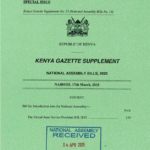Hartmut Winkler, University of Johannesburg
Over the past few months, South Africa’s power generation sector has performed better than expected. Four factors explain this: an acceleration of solar power installations, less frequent breakdowns at power stations, a less restricted supply of diesel and the return to operation of some units at Kusile coal fired power station.
Throughout most of this year South Africa experienced prolonged and damaging electricity shortages, making 2023 the worst year to date. The power utility Eskom confirmed this in its annual results presentation, in which it said: “Eskom’s generating plant availability reached the lowest levels ever, due to unprecedented levels of unplanned unavailability.”
The percentage of functional power generating capacity, which was typically around 90% in the 1990s, has dropped over the past few years. It was between 50% and 60% for most of 2023.
Kgosientsho Ramokgopa, the country’s minister of electricity (a post created recently to deal with the electricity problems) has declared that the worst of the crisis is over, and that power cuts will soon be a thing of the past.
Is he right? Is the government’s optimism justified?
There is certainly reason to be pleased that the 2023 winter electricity shortfalls were less grave than expected, and that Eskom has booked some recent successes in its efforts to stave off further declines. But it’s too early to claim a turnaround, which requires fundamental medium-term measures and reforms.
Mitigating factors
In the last year, a number of factors have assisted in mitigating the power crisis.
Firstly, an acceleration of private solar power installations. The acute power shortfalls triggered a long overdue drive towards private solar rooftop installations. The move was boosted by government-promoted tax incentives and loan schemes.
According to estimates provided by Eskom, the capacity of private solar installations has risen by 349% between March 2022 and June 2023. The total peak generating capacity of these was in June 2023 expected to be almost 4,500 MW. As solar energy generation is limited to daytime sunny conditions, this translates to about 1,200 MW on average.
Secondly, less frequent breakdowns at the coal power station fleet, apparently linked to a decrease in sabotage activity.
The previous Eskom CEO claimed to have uncovered evidence of massive sabotage at power plants. While the scale of such sabotage is uncertain, it is likely that at least some has occurred.
There have been several arrests. Instances of breakdown have been lower in recent months (although breakdowns are still extraordinarily high). Together with plant repairs, the effects have been to reduce unplanned outages by about 2,000 MW.
Thirdly, a less restricted supply of diesel.
In 2022 the power crisis deepened when Eskom ran short of funds to purchase diesel. The power stations where electricity is generated from burning diesel are only envisaged as a backup during acute shortages, but have been kept running longer than intended.
Assisted by government taking over half of its debt, Eskom has a much higher budget of R27.9 billion for diesel purchases (about US$1.6 billion) for the current financial year. Half of this amount has already been spent.
Lastly, the return to service of some of the damaged Kusile coal power station units. This plant could, if fully operational, contribute about 15% of the country’s electricity needs.
The scale of the power shortage in the last year was largely due to multiple failures at Kusile. Kusile is the country’s newest large plant, but nine years after its initially projected completion date, two of its six units have still not been finished.
In October 2022 Kusile lost three of its units, or 2,400 MW, due to a collapse of the flue ducts. Two of these were restored in the last month, albeit with much higher than usually permitted emission levels. These additional 1,600 MW now available, and the 2,400 MW from the remaining three units projected to come into service in the coming year, are the main reason for the minister’s optimism.
On the down side, lengthy closures will be needed at some point to properly fix the flue ducts. It is also worrying that Kusile and the new Medupi plant have experienced so many failures already.
ALSO READ: Agoa trade deal talks: South Africa will need to carefully manage relations with the US and China
Persistent dangers
There are nevertheless signs that the recovery of the power generating sector is still far off.
The biggest threat is that the ageing and overworked coal plant fleet remains vulnerable to breakdowns.
Secondly, the life extension project for the country’s sole nuclear power plant, Koeberg, is progressing far too slowly. Calls for its closure are gaining traction.
Koeberg’s operating licence expires in July 2024. If not renewed, Koeberg’s two units would have to be closed for good. That would result in a 4% drop in the country’s generating capacity.
To extend this licence for 20 years, the National Nuclear Regulator has requested significant plant upgrades and component replacements. This was in 2010 projected to cost R20 billion (US$2.8 billion at the time) and require five months’ down time for each unit.
Given bad planning and delays so far, it is unlikely that work will be completed by the licence expiry date.
Thirdly, delays in the drafting of a revised national electricity plan highlight sharp disagreement within government on the solution.
Electricity generating infrastructure planning in South Africa is guided by Integrated Resource Plans that are supposed to be redone every two years. The country is currently using a plan approved in 2019.
The next plan is therefore already two years late, and its release for public comment has been promised for many months. The latest September release date was also missed.
The delays probably reflect unhappiness in parts of the ruling party with a path that emphasises renewable energy. The minister of mining and energy, whose department is responsible for the energy plan, is known to favour power generation from coal, gas and nuclear.
What’s needed
Without strategic alignment on how to address the electricity crisis, government won’t be able to develop new power plants. The old coal plants will not be as efficient as 20 years ago, and high breakdown levels will persist.
It therefore remains unlikely that South Africa’s electricity problems will end in the short to medium term.
Hartmut Winkler, Professor of Physics, University of Johannesburg
*This article is republished from The Conversation under a Creative Commons license. Read the original article.













